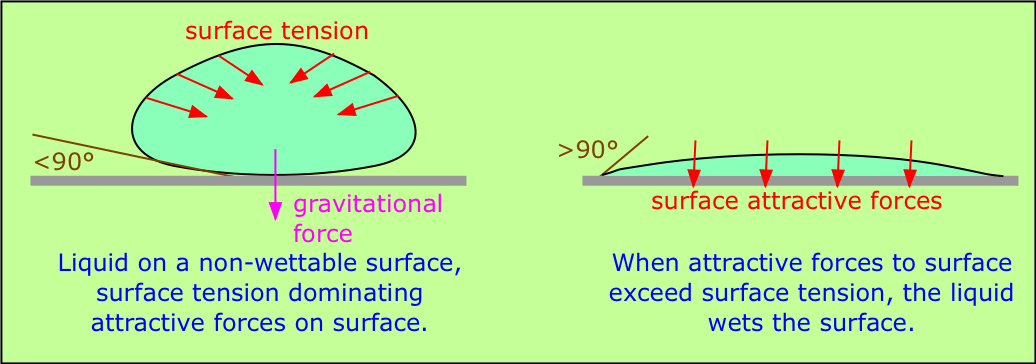I think they gave you the wrong message in your art school. Traditionally, painters would paint in oil over an underpainting in tempera, which in turn would be put on a chalk plus glue base. Now tempera is an emulsion on the basis of the egg yolks in it (think of real! mayonnaise), which provides the physical-chemistry for the oil paint to stick. Actually, it partly the physical-chemistry of the materials and partly the surface roughness that allows the oil to stick.
Apart from so-called van-der-Waal's attractive forces and other types of chemical interaction, it is the 'wetting' angle that in the first place determine, whether a liquid will spread out on a surface or form droplets:
 https://www.chem1.com/acad/sci/wat-images/wetting.png
https://www.chem1.com/acad/sci/wat-images/wetting.pngThe wetting angle is determined by the solvent in which the paint particles are immersed. Water has a high surface tension and a wetting angle of less than 90° with respect to oils/enamels. This is why it will form droplets. By adding alcohol, one can reduce the surface tension so that the wetting angle become larger than 90°. It may then form a uniform layer on the surface. Adding a detergent (washing-up liquid) will have a similar effect (which is why washing-up liquid gets the grease of your pan).
Another way to overcome the problem, is to have a rough surface with wetting angles point into many different directions at a microscopic scale. The average wetting angle may then be larger than 90°. That is why oils/enamels will stick to flat acrylics, or even acrylics may stick to flat enamels. The flatting agent itself may also increase the wetting angle.
Surface tension is only part of the story. Having the right wetting properties will help you getting the paint onto the surface, but will not necessarily make it stick. Ideally, there should be physico-chemical interaction between the paint and the surface. However, it may be sufficient, if the paint is able to 'key' into the surface. Which is why it sticks better to flat surfaces and why we lightly sand surfaces to be (re)painted.
The 'drying' of oils/enamels and acrylics are rather different processes. In oil paints the oil actually oxidises due to short-wave radiation (UV) energy input. In most cases the volume change is quite small. What happens with enamels depends on their formulation. There may be polymerisation and/or simply evaporation of the solvent. Acrylics physically dry on one hand, but also form cross-links between the molecules. The high water content in them can mean a significant change of volume, i.e. shrinking.
The problem of volume change can be overcome by applying thin layers, preferably with an airbrush or spray can. When the shrinking forces are smaller than the tension strength of the paint, the keying-in will keep it on the surface. This condition arises when applying only very thin layers at any one time. In this way one may be able to built up a layer of paint on even unfavourable surfaces, but it may not stick very strongly.



